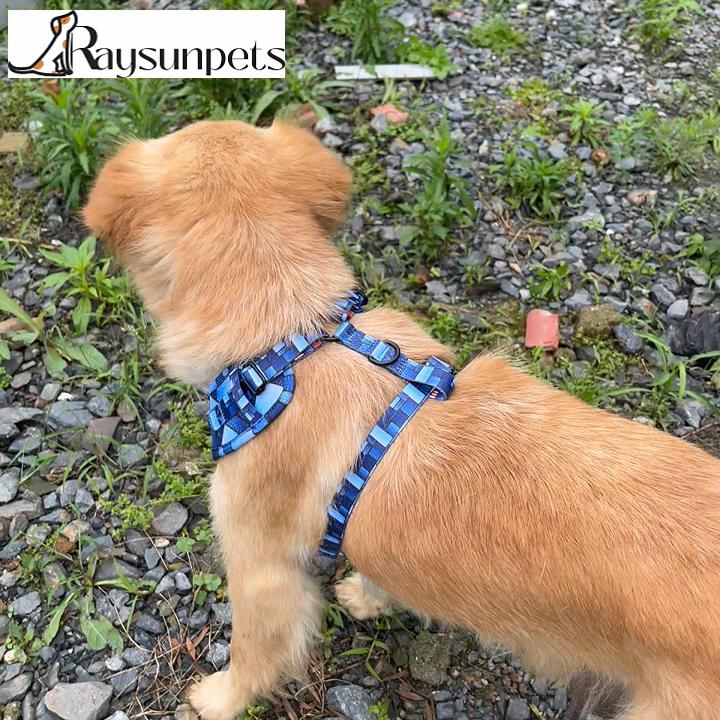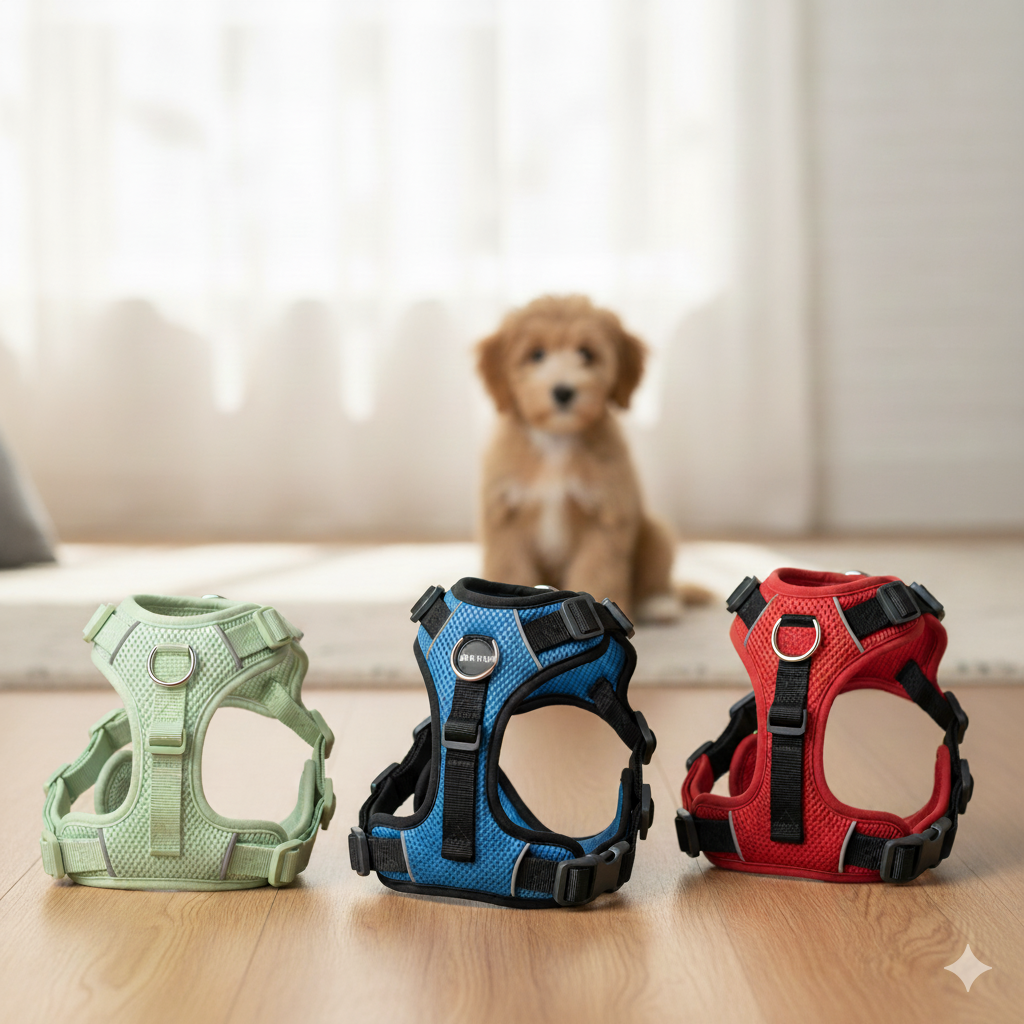Dog Harnesses are an essential piece of equipment for dogs, providing both safety and comfort during walks and while traveling. According to all the experts we consulted, pet harnesses are considered safer than dog collars because they do not exert strain directly on the neck and provide a more secure containment for your pet.
With the plethora of product options available, it can be challenging for both experienced dog owners and new pet parents to navigate the choices. Energy levels and physical attributes of the dog should be taken into consideration when selecting a suitable no pull dog harness. For example, a sturdy pet harness is needed for a young, energetic dog, while a fragile Chihuahua may be more comfortable in a mesh vest-style harness. Additionally, a ridgeback that tends to pull would benefit from a strap-style harness with a control loop. Similarly, a French bulldog should have a harness that does not constrict their chest or throat, such as a soft step-in harness that evenly distributes their weight
https://raysunpets.com/products/dog-harness/
Choosing the wrong dog harness can lead to discomfort, pulling, or even injury—finding the right one is crucial to your dog’s safety and training success.
With so many dog harnesses on the market, finding the right one is tough. We reviewed top options to help you pick the safest, most comfortable fit.
Keep reading to discover how we tested, what to look for, and which harnesses really perform.
Why You Should Trust Us
At Raysunpets, we don’t just sell pet products—we live and breathe pet wellness. Our team includes certified trainers, experienced pet owners, and product testers who’ve seen firsthand what works for dogs and what doesn’t. We’ve tested dozens of harnesses across a range of breeds, sizes, and needs to give you truly useful insights—not just what’s trending.
Who This Is For
This guide is for any dog owner searching for the best dog harness — whether you’ve got a puller, a nervous pup, a growing puppy, or a senior dog with special support needs. It’s also for those wondering about harness attachment points, fit issues, and whether puppies need special harnesses. If you care about your dog’s safety and comfort, this article is for you.
How We Picked:
We evaluated over 40 customer dog harnesses using strict criteria:
Fit and adjustability: A proper fit is crucial, so we focused on options with multiple adjustment points and sizes.
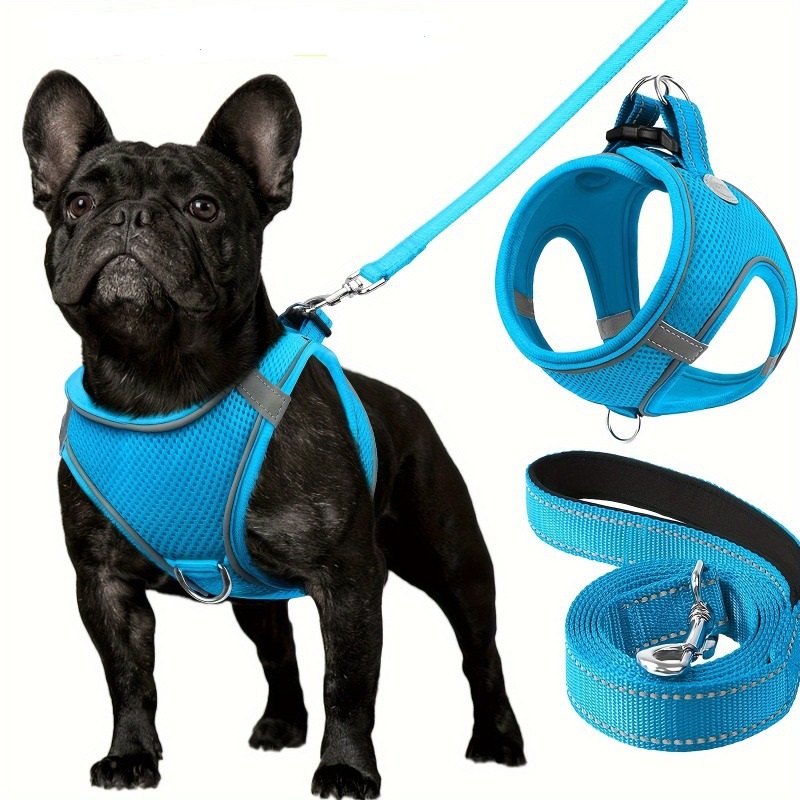
Harness styles:
When choosing the best harness for your dog, it’s important to understand a few key terms:
Head-in: This type of harness is placed on your dog headfirst. It is the most common type of harness and generally comes in three standard styles: Vests offer the most coverage, strap styles are more minimal, and the classic harness is somewhere in between. For larger dogs, head-in styles are usually easier to put on.
Step-in: This type of harness gets buckled onto a dog by wrapping it around their midsection. Lay the harness on the ground and allow the dog to step its front feet into the openings, or lift your dog’s paws into the right spots. Then bring the sides up and clip. Step-in harnesses can be easier to put on smaller dogs because you can lift the dog to place their paws into the harness. Vest, strap, and classic/medium coverage harness categories apply for this type as well.
Whether they’re head-in or step-in, medium-coverage vest and strap-style harnesses are the most popular overall at Raysunpets, according to Vicky Wang, the company’s merchandise manager for dog and cat supplies. “For smaller dogs, step-in harnesses are preferred, while over-the-head options are the more popular choice for larger dogs.” There are more niche types, such as utility harnesses for working dogs, head collars for training, and various others, but we focused on mainstream styles.
Materials and durability: We tested for strength, softness, and long-term wearability.
Control and training suitability: For dogs that pull, a harness should help redirect without choking.
Ease of use: We assessed how simple it was to put on and take off.
Dog comfort: Padding, weight distribution, and chafing potential were all considered.
Owner reviews and vet recommendations: We gathered feedback from thousands of pet owners and spoke to professional trainers and vets.
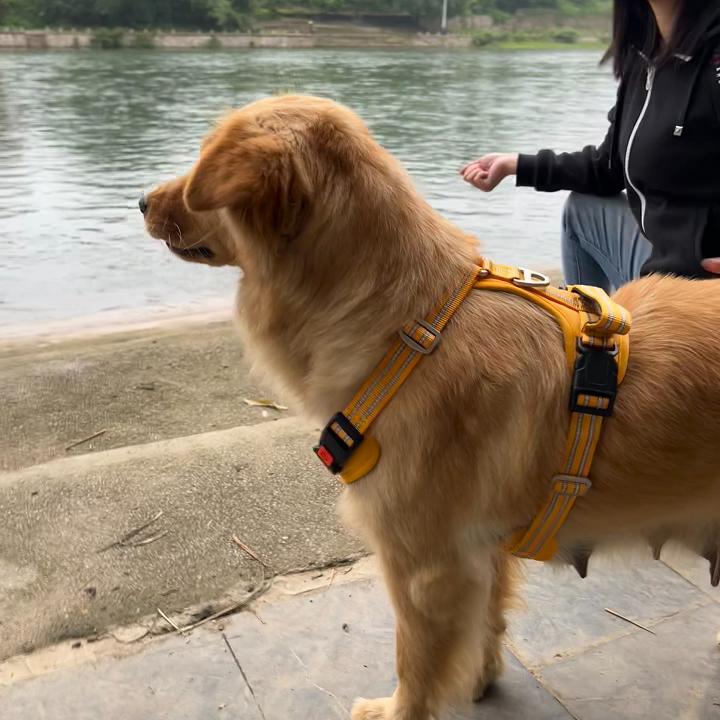
How We Tested
Our testing involved real dogs of different sizes, ages, and temperaments. From hyperactive puppies to calm senior dogs, we wore these harnesses during walks, training sessions, hikes, and even car rides. We focused especially on:
Whether the dog harness stopped pulling effectively
How easily it adjusted for growing puppies
If dogs showed signs of discomfort or chafing
Whether the pet harness stayed in place during movement
How it performed with leash attachments—front vs. back
We also simulated wear-and-tear by washing, pulling, and adjusting each model repeatedly.

The Competition
Among the top contenders, here are our final recommendations:
Ruffwear Front Range Dog Harness
Best for all-purpose use. With front and back clips, breathable padding, and five adjustment points, this is ideal for training and everyday walks. Especially effective if your dog pulls.
Raysunpets No Pull Dog Harness
Custom Pattern tailored for both comfort and style. Designed to fit your dog’s exact measurements, this harness ensures a secure fit that prevents chafing or slipping. The front clip design gently discourages pulling without straining your dog’s neck, making training safer and more effective. Choose from a range of unique, vibrant patterns to match your dog’s personality. Whether you have a tiny toy breed or a big adventurer, our size-specific design offers maximum control and flexibility. Ideal for daily walks, training sessions, or just showing off your pup’s custom flair!
Blue-9 Balance Harness
Perfect for training. Designed by trainers, it offers full range of motion, with a Y-shaped front and multiple harness attachment points. It’s ideal for dogs that tend to lunge or veer.
Puppia RiteFit Soft Dog Harness
Best for small dogs and puppies. Lightweight, with soft mesh and easy step-in style, this one fits comfortably on tiny torsos. Great if you're asking, "Do puppies need special harnesses?"
Kurgo Tru-Fit Smart Harness
Best for car safety. This dual-purpose harness is crash-tested and includes a seatbelt tether. It has front and back clips and is well-padded.
PetSafe Easy Walk dog Harness
A favorite among trainers for dogs that pull, thanks to its front-clip design that discourages lunging and jumping. However, it may not be ideal for very small breeds or dogs with narrow shoulders.
Many cheaper harnesses failed due to poor stitching, limited adjustability, or causing chafing. We recommend avoiding knockoffs and only choosing brands that prioritize ergonomic design and long-term wear.
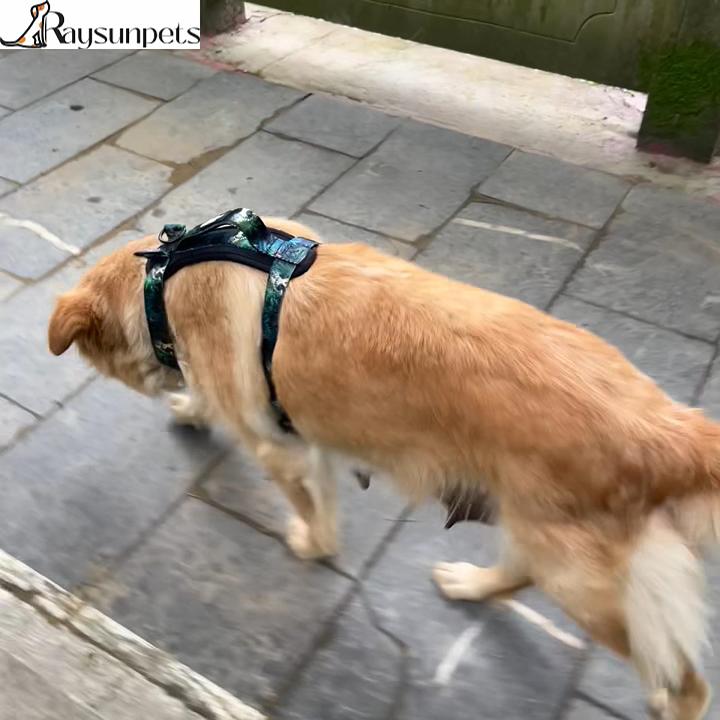
Sources
We consulted with:
Professional dog trainers to understand what to know if your dog pulls
Veterinarians on safe materials and harness styles
Dog behaviorists about anxiety and leash reactivity
Real dog owners through surveys and forums
Manufacturer specs and return policies
We also read hundreds of customer reviews and verified independent third-party safety tests.
Summary
The right harness balances comfort, control, and fit—choose wisely for your dog’s health and training success.
Cindy Long is the Sales Manager of Raysunpets and a pet lover with over 12 years of experience in exporting pet products. She specializes in providing customized dog chest carriers, leashes and pet accessory solutions for the European and American markets, always focusing on the real needs of customers and pets, and is committed to creating high-quality, practical and comfortable products that allow fur kids to live happier lives.

